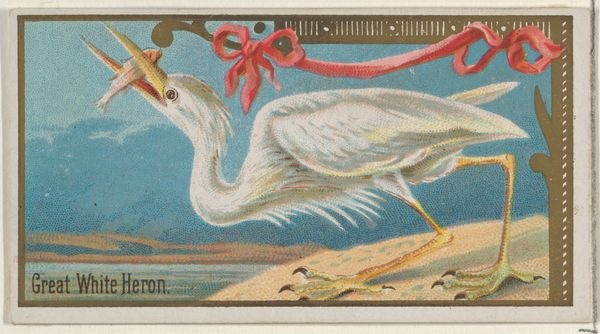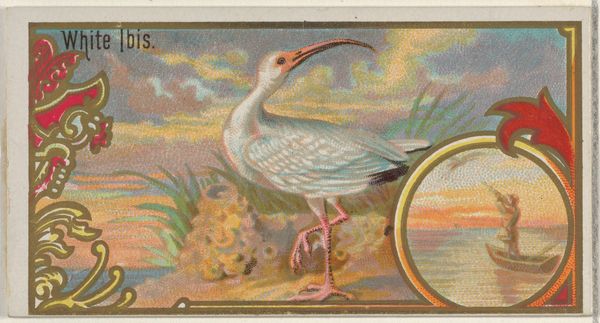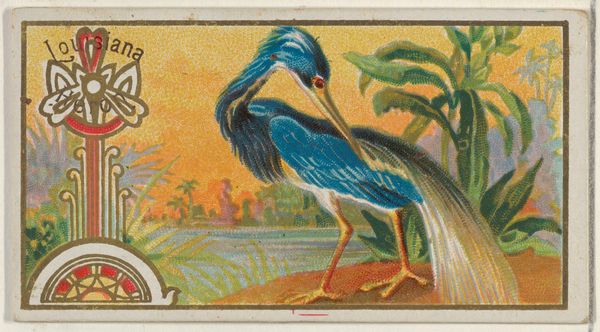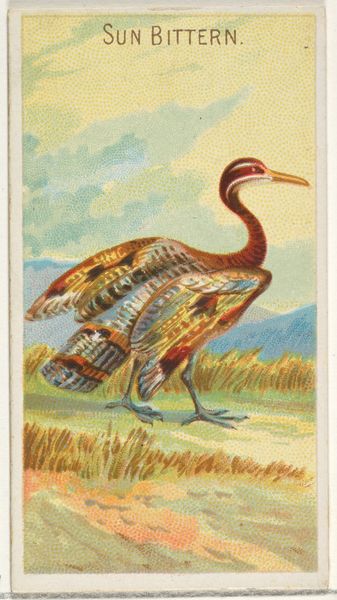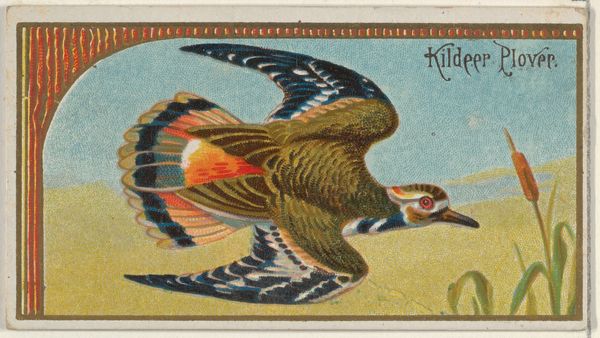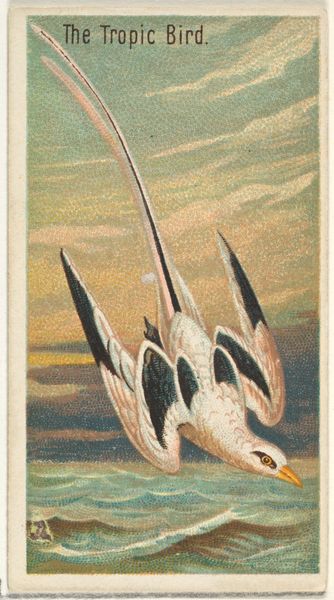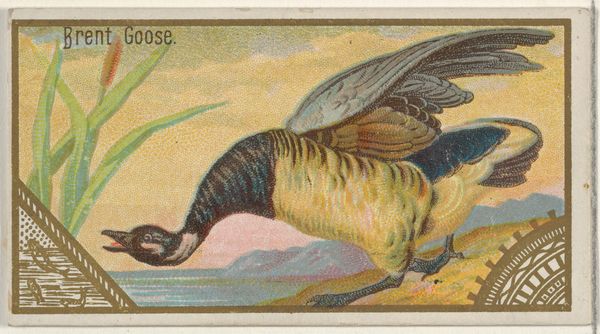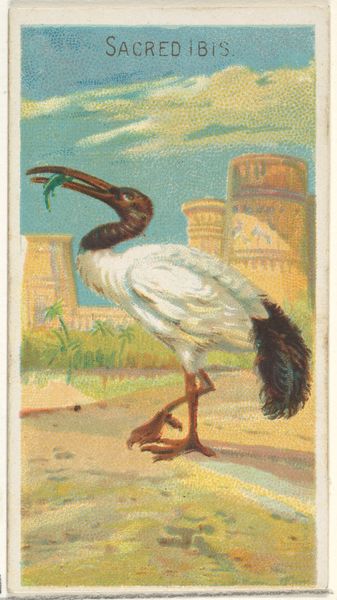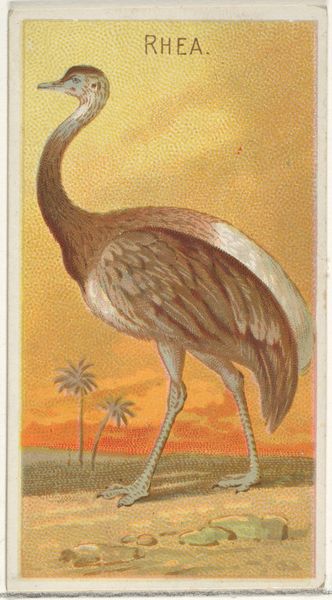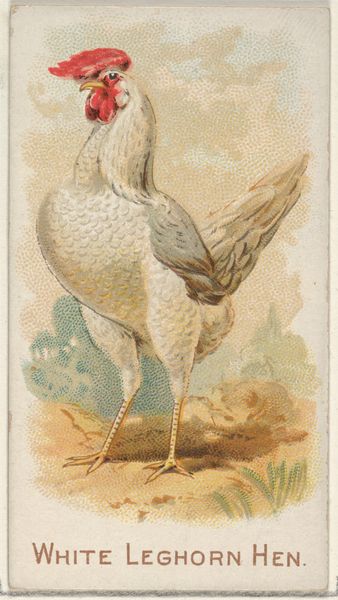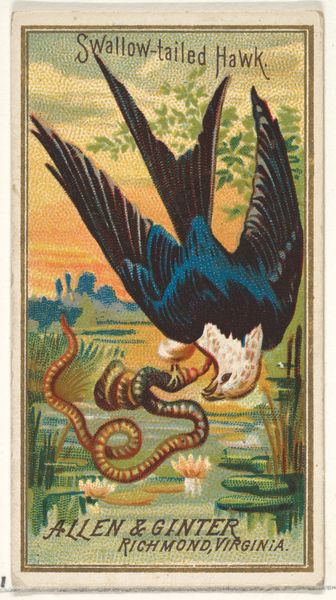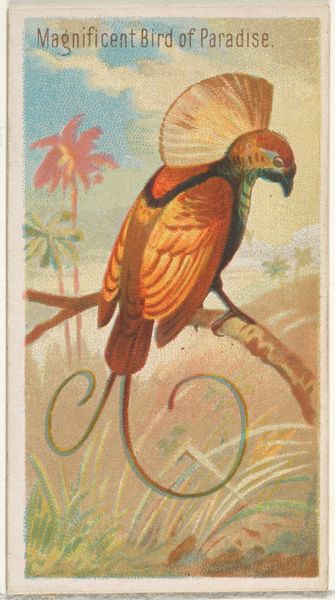
American White Egret, from the Game Birds series (N13) for Allen & Ginter Cigarettes Brands 1889
0:00
0:00
Dimensions: Sheet: 1 1/2 x 2 3/4 in. (3.8 x 7 cm)
Copyright: Public Domain
Curator: This is the "American White Egret, from the Game Birds series" produced in 1889 by Allen & Ginter as a lithograph for their cigarette brands. It's currently housed here at the Metropolitan Museum of Art. Editor: My first impression is the intense gaze of this Egret. There’s a concentrated stillness as it anticipates the next moment. And, frankly, there’s a delightful artificiality to the scene – in a good way! Curator: Absolutely, that manufactured serenity speaks volumes about the Gilded Age and the desire to depict an idealized American landscape, even on something as ubiquitous as a cigarette card. Consider, also, how these images helped disseminate ideas about nature and national identity, reaching wide audiences, influencing perceptions of both leisure and class. Editor: And yet, the materiality is right there in front of us, the watercolor giving this feeling of being light, transient, cheap, while those delicate, elaborate Art Nouveau-ish gold details scream ‘opulence.’ It makes me wonder about who printed these, and what it was like working in the lithography studios? What kind of labour practices allowed these small luxuries to enter into common use? Curator: Those are critical questions to ask when considering such ephemeral objects! It's important to remember how these images actively participated in consumer culture, shaping desires and normalizing the consumption of both tobacco and a certain aesthetic vision that catered to predominantly white, middle-class sensibilities. Editor: Precisely! It also begs the question, what role did those manufacturing play in constructing a new visual language of consumerism that subtly reinforces gendered or racial hierarchies in a very tactile and embodied form? Curator: I agree entirely. These cards reveal much about the social and political values embedded within seemingly innocent representations of wildlife and leisure. By looking at the intersections of race, class, and consumerism within the historical context of its creation and distribution, we get a glimpse into the power structures in America. Editor: In other words, the object invites a deeper look at the social fabric woven with commerce and consumerism, one watercolor stroke at a time. Curator: Yes. This print is not simply an illustration of a bird, but a carefully crafted message deeply entrenched in its time.
Comments
No comments
Be the first to comment and join the conversation on the ultimate creative platform.
